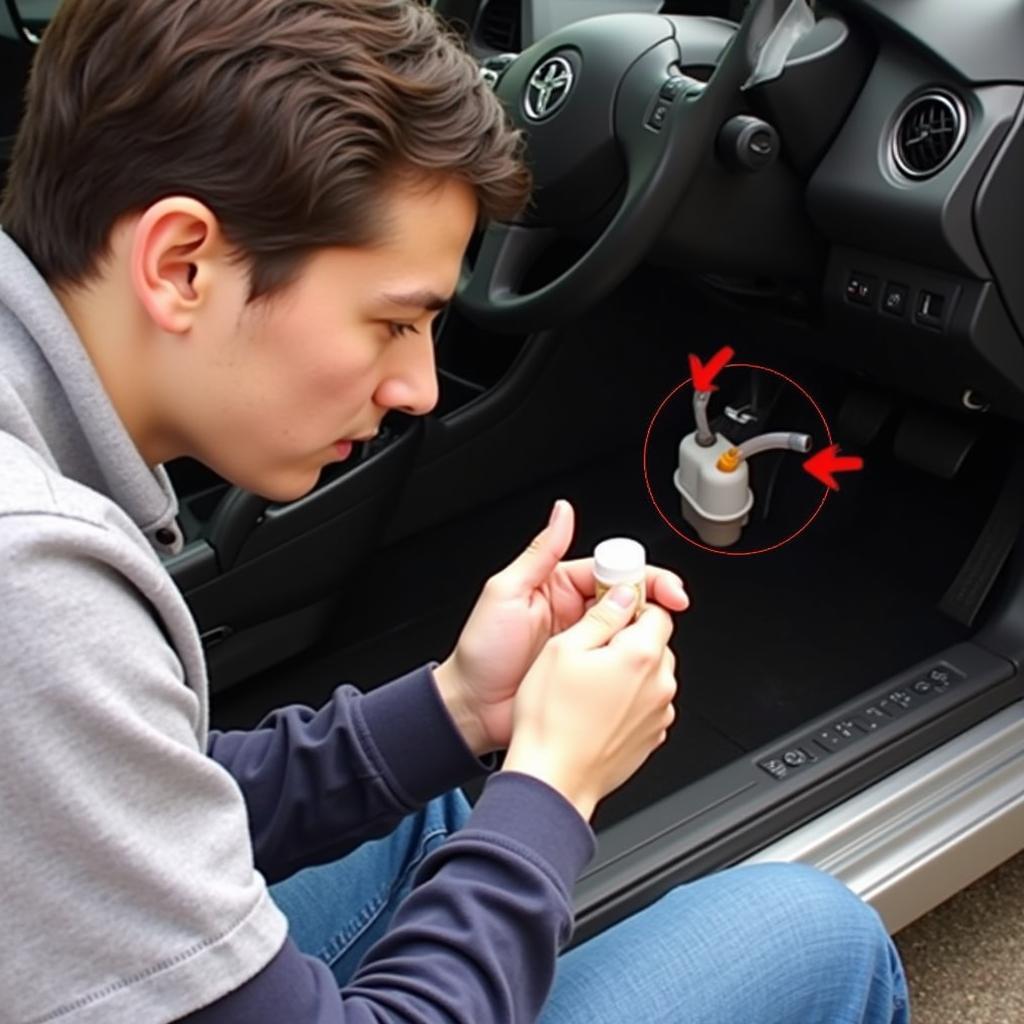A malfunctioning key fob can be a real headache, especially when you’re trying to get somewhere on time. If you’re experiencing issues with your Honda Pilot key fob, you’re not alone. This problem is more common than you might think. But don’t worry, we’re here to help you troubleshoot the issue and get back on the road.
Common Honda Pilot Key Fob Problems and Their Solutions
Before we dive into specific solutions, it’s important to understand the potential reasons behind your Honda Pilot key fob malfunction. Here are some common culprits:
- Dead Battery: The most frequent cause is a depleted key fob battery.
- Signal Interference: Electronic devices, radio towers, or even other key fobs can interfere with the signal between your key fob and your Pilot.
- Programming Issues: Sometimes, the key fob might lose its programming, preventing it from communicating with your vehicle.
- Key Fob Damage: Physical damage from dropping or water exposure can also render your key fob useless.
- Internal Faults: In some cases, there might be internal component failure within the key fob itself.
Now, let’s explore how to troubleshoot each of these problems:
How to Fix a Honda Pilot Key Fob
1. Replace the Battery
A dead key fob battery is the most straightforward issue to fix. Here’s how to replace it:
- Locate the battery compartment: Check your key fob’s manual or look for a small release button or groove.
- Open the compartment: Use a coin or a small flat-head screwdriver to gently pry open the compartment.
- Identify the battery type: Honda Pilot key fobs typically use a CR2032 battery.
- Insert the new battery: Make sure the positive (+) side faces up.
- Close the compartment: Snap the compartment back together securely.
Once you’ve replaced the battery, test your key fob to see if the problem is resolved.
2. Check for Signal Interference
If your key fob is new or has a fresh battery, signal interference might be the culprit. Try these steps:
- Move closer to your vehicle: The signal might be weak if you’re too far away.
- Remove potential interference: Keep your key fob away from electronic devices like cell phones, laptops, and Bluetooth speakers.
- Change your surroundings: Metal structures or underground parking lots can sometimes interfere with the signal.
3. Reprogram Your Key Fob
If the signal isn’t the problem, you might need to reprogram your key fob.
“Reprogramming a key fob might seem intimidating, but it’s often a simple process that can be done at home,” says automotive electronics specialist, John Miller.
While the exact steps may vary slightly depending on the model year, here’s a general guide:
- Get in your Pilot: Close all doors.
- Insert the key: Put your working key into the ignition cylinder.
- Cycle the ignition: Turn the key from the “Off” position to the “On” position (without starting the engine) several times, ending in the “On” position. The number of cycles may vary by model year, so consult your owner’s manual.
- Press the Lock button: Press and hold the “Lock” button on your key fob for about 30 seconds. You might hear a chime or see the hazard lights flash, indicating successful programming.
- Test the key fob: Try locking and unlocking your Pilot to confirm that the reprogramming worked.
Note: If you are unable to reprogram the key fob yourself, you may need to consult your Honda dealer or a qualified automotive locksmith.
4. Inspect for Physical Damage
Carefully examine your key fob for any signs of physical damage, such as:
- Cracks or breaks: Check the casing for any visible damage.
- Water damage: Look for any signs of corrosion or water intrusion.
- Worn-out buttons: Buttons that are stuck or unresponsive might indicate internal damage.
If you find any significant damage, replacing your key fob is the most reliable solution.
5. Seek Professional Help
If you’ve exhausted all troubleshooting options and your Honda Pilot key fob is still not working, it’s best to seek help from a professional. A qualified automotive locksmith or your Honda dealership can diagnose the issue accurately and provide the necessary repairs or replacements.
Honda Pilot Key Fob FAQs
Q: Can I drive my Honda Pilot with a dead key fob battery?
A: Yes, you can usually start your Honda Pilot with a dead key fob battery by using the physical key blade to unlock the door and then holding the key fob near the start button to start the engine.
Q: How much does it cost to replace a Honda Pilot key fob?
A: The cost of replacing a Honda Pilot key fob can vary depending on the model year, your location, and where you purchase the replacement. On average, you can expect to pay between $150 to $400 for a new key fob, including programming.
Q: How long does a Honda Pilot key fob battery last?
A: The battery in a Honda Pilot key fob typically lasts between 3 to 5 years, depending on usage and environmental factors.
Q: Can I program a new key fob myself?
A: Yes, you can often program a new Honda Pilot key fob yourself by following the steps outlined in your owner’s manual. However, some models may require professional programming.
Q: How can I prevent my Honda Pilot key fob from getting damaged?
A: To protect your key fob, invest in a protective case, avoid dropping it, and keep it away from water and extreme temperatures.
Conclusion
Dealing with a faulty key fob can be frustrating, but with a little troubleshooting, you can often resolve the issue yourself. By following these steps and understanding the common causes of Honda Pilot key fob problems, you can get back to enjoying a seamless driving experience. Remember, if you’re unsure about any step or if the problem persists, it’s always best to consult with a qualified professional for assistance.

